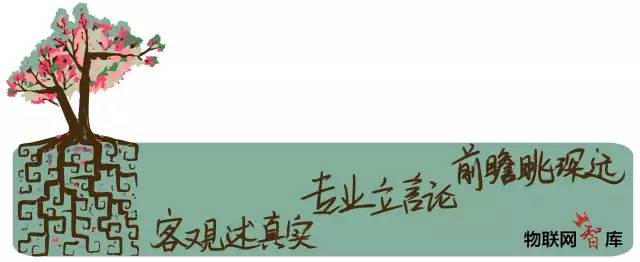
Abstract:
The market opportunities for the Internet of Things (IoT) are undoubtedly vast, with specific verticals revealing valuable points of integration with IoT. Wireless sensor networks play a crucial role in the IoT landscape as they manage the lifeblood of data, and transitioning the node communication management of these networks to the cloud represents a revolutionary breakthrough.
The core technologies of the high-tech market have long been constrained by foreign entities, which has been a persistent risk for the Chinese economy. The recent “ZTE incident” has once again highlighted this pain point for the Chinese populace. As one of the strategic high grounds for the new round of global economic and technological development, the IoT is triggering significant changes in the era, providing a chance for new Chinese tech companies to catch up with their Western counterparts. However, in the face of the “chip shortage and lack of core technology,” how can the IoT industry stand tall? The only answer is: mastering core technologies with independent intellectual property rights. Recently, I had a conversation with Liao Yuan, Chairman and CEO of Beijing Bodao Guangtong IoT Technology Co., Ltd. As a “global leader in the full industry chain technology and services for IoT” and the first publicly listed company in core IoT technology (stock code: 835801), Bodao Guangtong possesses the core communication protocol for IoT with completely independent intellectual property rights in China (referred to as the GTiBee protocol). In this dialogue, Mr. Liao discussed the significance of “independent innovation” for a company, providing an in-depth analysis of the strategies for building core technologies in Chinese enterprises amidst the opportunities presented by IoT.

Challenges of Universal Connectivity: The Drawbacks of the “Decentralized Self-Organization” Mechanism in Node Communication Management of Wireless Sensor Networks
Thanks to advancements in MEMS, MCUs, and low-power wireless networks, wireless sensor networks have rapidly developed, becoming the foundation for the interconnected world. However, as the number of devices requiring network access continues to grow exponentially, traditional self-organizing multi-hop wireless sensor networks can no longer support the demand for connectivity among billions of devices. According to Liao Yuan, traditional wireless sensor networks face several urgent issues that need to be addressed:
1. Limited Processing Power: The control center of traditional wireless sensor networks is distributed across any terminal node and relies on microcontrollers for management, resulting in limited processing capabilities;
2. Node Quantity Limitations: As nodes serve as the control center for communication management, the number of nodes in a local network is limited (to dozens). Although theoretically, mesh expansion can be achieved based on nodes, the processing capacity for communication management is constrained. Revolutionary technological changes are needed to break through the limitations on node quantity;
3. Power Consumption Issues: Traditional wireless sensor networks have complex processes for access, networking, and reconnection, leading to significant energy expenditure during network communication, which is detrimental to further reducing node power consumption;
4. Hardware Performance Requirements: Each terminal node possesses network communication management capabilities, which imposes high requirements on hardware, making it difficult to reduce the hardware costs of nodes and affecting the widespread adoption of IoT.
It is evident that if the node communication management of wireless sensor networks continues to be characterized by a “decentralized control center” (self-organizing networks, independent calculations by distributed nodes), the pace of IoT adoption will inevitably slow.
In the coming years, hundreds of billions of devices will be connected. If the node communication management of wireless sensor networks remains under the “decentralized self-organization” (self-organizing networks, independent management of distributed nodes) mechanism, it will undoubtedly slow the pace of IoT adoption and hinder industry development. Breaking this barrier to achieve rapid connectivity for hundreds of billions of devices has become an urgent issue for the development of the IoT industry. Bodao Guangtong has taken the lead in providing an answer.
Trend of the Times: The Concept of “Cloud Control Center” Mechanism for Node Communication Management Promotes IoT Adoption
The “Cloud Control Center” mechanism for node communication management (CWSN technology) has become a powerful tool to address the aforementioned issues in wireless sensor networks. As Liao Yuan stated: “The cloud control center replaces the traditional decentralized control center for nodes, just as digital telephony replaced analog telephony, forming an irreversible trend.” With the development of cloud computing and big data, the application of cloud control centers in wireless sensor networks has a solid foundation. Seizing this opportunity, Bodao Guangtong has launched the “CWSN Wireless Cloud Sensor Network Communication System,” effectively addressing the drawbacks of the “decentralized self-organization” mechanism in node communication management, easily meeting the connectivity demands of hundreds of billions or even trillions of devices.
From a processing power perspective, the “CWSN Wireless Cloud Sensor Network Communication System” optimizes the data processing capabilities for each node in the wireless sensor network based on powerful cloud computing capabilities, significantly enhancing data processing capacity.
From the perspective of network node quantity, the “CWSN Wireless Cloud Sensor Network Communication System” places network nodes in the cloud, breaking through the physical space limitations of computing capacity. Additionally, the strong scalability of the cloud control center allows for the possibility of thousands or even more nodes per gateway.
From a power consumption perspective, the cloud control center can reduce the complexity of protocols and hardware resource requirements for terminal nodes, thereby lowering power consumption. It can also optimize the management of node sleep cycles in the cloud according to the working characteristics of the nodes, significantly reducing power consumption.
From the perspective of hardware performance requirements, since data can be directly uploaded to the cloud, terminal functions become simpler, reducing node costs. Moreover, due to the powerful software capabilities of the cloud, many hardware functions can be defined through software, lowering hardware performance requirements and accelerating the standardization of hardware.

Currently, LoRa and NB-IoT are mainstream technology standards suitable for wireless sensor networks, and one of their significant features is the presence of a cloud control center. Replacing the “decentralized self-organization” mechanism with a “cloud control center” is an inevitable trend in the development of IoT. The “CWSN Wireless Cloud Sensor Network Communication System” is the best choice for enterprises to adapt and achieve intelligent transformation in the “Internet +” era.
Core Technology Opportunities: Bodao Guangtong Masters Independent Core IoT Technology Ahead of Others, Chinese Enterprises Are Just Starting
Recently, the internationally renowned research institution IDC released a report indicating that the recognition rate of IoT among Chinese enterprises is 98.8%, far exceeding the global average. This is attributed to strong government support, media promotion, and enterprise application initiatives. More importantly, amidst this wave of IoT industry development, many outstanding Chinese tech companies are keeping pace with the development of IoT and have not fallen behind in core technology areas, even showing signs of catching up.
Taking the trend of cloud control centers in wireless sensor networks as an example, although tech giants worldwide have recognized this trend, a mainstream unified standard protocol has yet to be established. However, domestic IoT technology companies, represented by Bodao Guangtong, have made significant accumulations in this field. According to Liao Yuan, the establishment of Bodao Guangtong was based on recognizing this trend in IoT development. The founding team has over a decade of technical accumulation in this field, resulting in industrializable outcomes. Bodao Guangtong is committed to becoming a leading enterprise in providing “perceptive data” services in the IoT sector.
Bodao Guangtong has developed core underlying technologies for IoT, uniquely characterized by the GTiBee protocol, a wireless communication protocol with completely independent intellectual property rights held by Chinese individuals, led by the company’s founding partner and CTO, Dr. Wang Yu, a graduate of the Massachusetts Institute of Technology.
The GTiBee wireless communication protocol not only features low power consumption, high security, and strong reliability but also includes the CWSN wireless cloud sensor network communication management cloud center. Compared to other wireless transmission protocols like Zigbee, GTiBee’s characteristics allow for a massive number of network nodes, breaking through physical terminal limitations; it offers lower power consumption, a greater number of nodes, and stronger data processing capabilities. Additionally, it can better adapt to other wireless sensor networks with cloud centers, such as cellular networks and low-power wide-area networks, thereby laying down a comprehensive network for perceptive data and achieving true universal connectivity.
The trillion-dollar market of IoT is taking shape. As Liao Yuan, Chairman and CEO of Bodao Guangtong, stated: “Seizing upstream industries early, developing core technologies through independent innovation, and laying out the ecological chain based on this is the greatest opportunity in the current IoT industry.” Guided by this philosophy, and adhering to the mission of “making the world smarter and making IoT deployment and usage simpler than the Internet,” Bodao Guangtong has launched several leading technologies in the IoT industry after years of technical accumulation, including GSI sensor unified access technology, CWSN wireless cloud sensor network technology, SDWSN software-defined sensor network technology, and OPV7 IoT device security coding and addressing technology. This has broken the barriers of “chip shortage and lack of core technology” in the Chinese IoT industry, taking control into their own hands, and the company’s future development prospects are promising.
With the introduction of the “Internet +” action plan, the IoT industry is facing unprecedented historical opportunities. Driven by the new trend of cloud-based node communication management technology in wireless sensor networks, the application and development of the IoT industry will also reach new heights. With opportunities ahead, how will leading IoT enterprises like Bodao Guangtong, which master independent core technologies, shape the future of the industry? It is worth looking forward to.
Author: Zhao Xiaofei
IoT Think Tank Original(Please indicate the author and source when reprinting)
 Today’s Host: Bing Yu
Today’s Host: Bing Yu
New IoT Service Platform
IoT Think Tank: Delivering valuable opinion articles daily IoT Headlines: The latest and fastest compilation of IoT news Think Tank Open Class: A premium IoT course every Monday Latest Scoop: Please add WeChat qj80431262 Article Submission: Please add WeChat zhaoxiaofei_lz Supply and Demand Matching: Please add WeChat tutu1993-0701 Recruitment: Please add WeChat hhlyzzl
Think Tank Express: Please add WeChat ivypzh